“That seems too much like work,” a commenter said, two weeks ago, about reading spreadsheets, and I haven’t been able to get that thought out of my head. If you work all day with spreadsheets, I can understand not wanting to return to their gridlike shapes in your after-hours. But if they just sound intimidating? The thing about a spreadsheet is that it’s only as complicated as you make it.
There are some impressive, elaborate versions out there; just searching “reading spreadsheets” will turn up loads of templates. But I like to keep it a little simpler. Okay, a lot simpler. And to tell you the truth, no reading tracking system has ever been easier—once I got the basic template up and running.
Things I have tracked my reading with include:
- a tiny notebook the size of an index card (it filled up so fast)
- a Metropolitan Museum of Art-themed journal that had space for maybe six books a month (I was a kid; this was not enough)
- the backs of the books themselves (penciling in the month and year finished)
- my head (very faulty system, do not recommend)
- the back of a journal (how to remember which books were written down in which journal?)
Probably there were more places, and there were plenty of years when I didn’t keep track at all.
Bookselling brought me back to the practice in a more organized way. I was reading more than ever before, and I wanted to keep track—partly just to know, and partly so that I had a resource when I was trying to recommend a book to someone. If you can keep every book you’ve ever read in your head, I admire you. I used to be like that. But then my head got full of other stuff, like memes and social media drama and even more terrible song lyrics. It’s crowded in there.
The spreadsheet idea came from my friend (and, at the time, fellow bookseller) Jenn Northington, who has done really cool things with her spreadsheets, like turning them into pie charts at the end of the year. I have never been quite that ambitious. But I like to see patterns and I like the satisfaction of the rising number of books-finished, every year.
And now, as the sheet begins its ninth year, I love the simplicity of being able to click to a tab and see what I’ve read since 2014. If you use one tab per year, it’s all there, easily viewable, no new documents or endless scrolling through a list required. I use it for reference when I’m writing, to jog my memory or remember trends in my reading; I use it when people ask for recommendations; I use it as a sort of diary, too, remembering why I read some books, where I worked, how my reading changes from job to job.
It’s simple. I swear. And endlessly malleable. A spreadsheet can be as plain as this: title and author. I don’t put first and last name in different columns because I’ve never wanted to sort by author (rather than by date read, which is how I enter them), but you could!).
Yes, you could do this in any word processing program. But then you don’t get tabs. I put each year’s reading in its own tab, so I can easily flip through everything I’ve read since I started this system.
Next, I added a column for publication date, to see if I was reading more new or old books, and then dates started and finished, because sometimes I like to remember which books I read in 24 hours and which books, for whatever reason, took me weeks. I added gender because I knew I read more women than men, but how many more? And then a year or two ago, I added nonbinary to the gender categories.
Then I have columns for genre or form. This is all up to you! Some people might track formats, too: paperback, hardcover, audiobook, ebook. Maybe you track whether you bought or borrowed a book. Mine changes a little bit year to year. One year I read a lot more poetry, one year a lot more YA. “Genre fic” for me basically means SFF, but also the slippery books around the margins that aren’t called SFF but seem to count that way to me.
And at the end, a little bit about the author, and notes.
The “author” column used to just be “country,” in part because I was running a book group and trying to read a book from a different country each month. That seemed like not enough, yet also got complicated: country of origin or country where they lived? Now I use it to, again, see patterns: Have I not read a book in translation for a while? Am I reading all white American novelists? You can track whatever you want to be aware of, here. Same with the notes: I keep track of books I reviewed, but what I want to start tracking there is who recommended a book to me, or where I heard about it. More things in which to see patterns!
I don’t fill out the details for a book until I’ve finished a book. Those I don’t finish, I slide to the bottom, where the DNF (did not finish) books live. It’s been useful to keep track of these; sometimes I go back and finish them (in which case I move them to the proper year’s tab) and sometimes I see patterns in what I didn’t click with in a given year. I add a little note about why I quit reading, though sometimes that note is just “not feeling it.”
Buy the Book
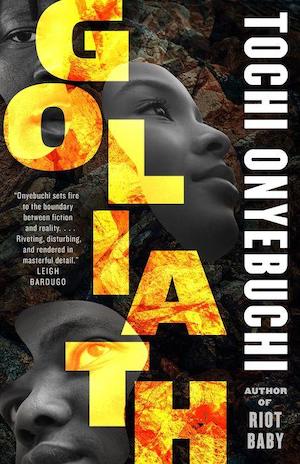

Goliath
There’s one bit of math on this spreadsheet: a tally at the bottom of the gender categories. The formula is just “=sum(F2:F103)” where F2 and F103 are whatever the top and bottom cells of the relevant column are on your sheet. That’s it! You can also have it add up each genre, if you like; that was initially the purpose of the “1” in each book’s relevant genre column. (You could use a fill-in-the-blank box for genre—but then you don’t get the satisfaction of getting a sense of what you’re reading with just a glance.)
The spreadsheet is also where I keep my list of books I want to read (they get their own tab). This is much easier to find and remember, for me, than a note on my phone, or another document, or simply trying to remember every single interesting book that catches my interest. It’s also easy to subdivide that list in whatever way you like—genre, form, topic, you name it.
At its heart, a reading spreadsheet is just a fancy list. It doesn’t need to do complicated math or have conditional formatting or any of those elaborate things the spreadsheets can apparently do. (It can! And that flexibility is part of why the whole concept is so great.) It’s just a different kind of list that makes it easy to see whichever details you want to include.
Like everything else to do with stories and how we engage with them, reading tracking is personal and subject to all your whims and foibles. But it’s practical, too. If you read mostly library books, a list will keep you from mistakenly checking out things you’ve already read. If you’re a book minimalist, someone who doesn’t keep everything they read, how else to remember every book you’ve read or started or given away or even just read a few chapters of?
Also it’s just fun to look at all that data. If you have that kind of brain. And it’s satisfying to add a book to the sheet, to fill in the date I finished reading it, to pinpoint that moment in a tiny, personal way. You don’t have to do any of this. But you just might find some joy in it.
Molly Templeton lives and writes in Oregon, and spends as much time as possible in the woods. Sometimes she talks about books on Twitter.











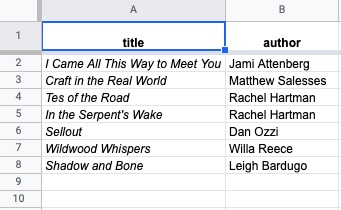


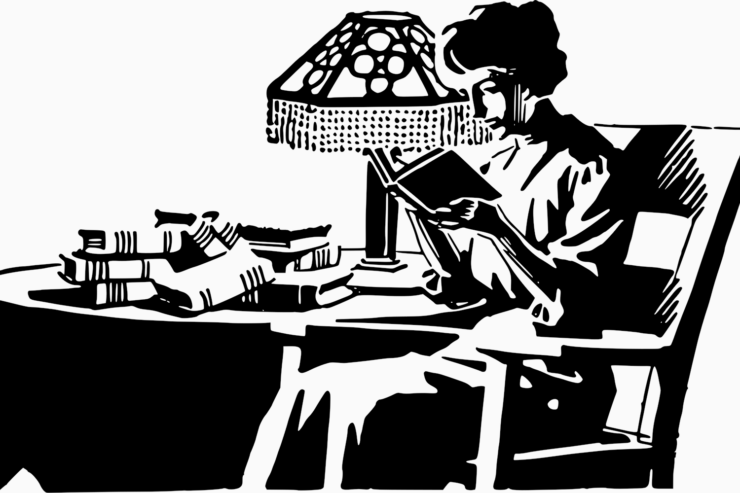
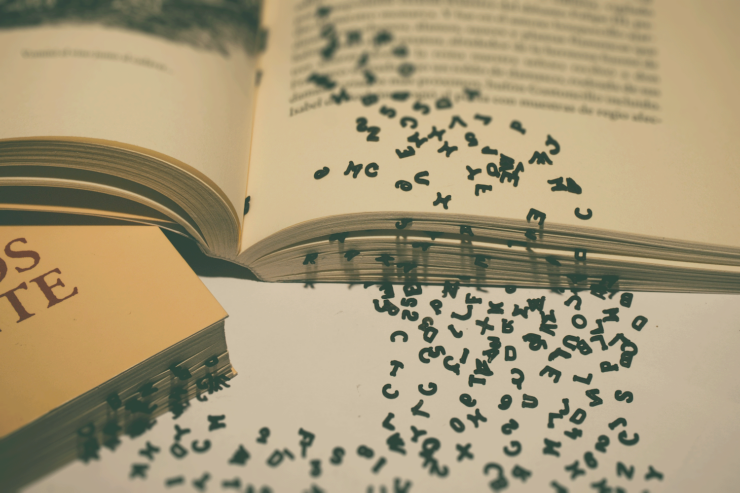

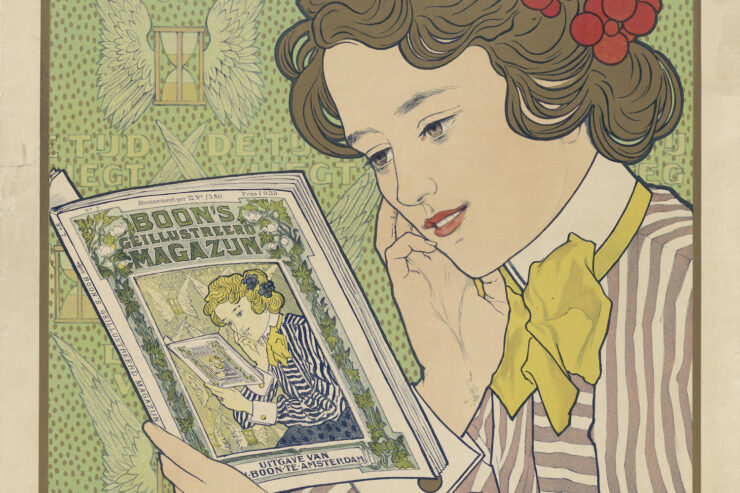
Or…you could just use goodreads?
My reading list grew to a reading spreadsheet grew to a relational database. I not only keep track of my reading and my collection, but also of interesting books (mostly based on awards and lists), stories or books contained within other books and other data like series or publisher series. I have a “copy” at LibraryThing, but because no site ever does what I want exactly I’d rather roll my own and learn more about database models and some dev work. Overkill? Yes. Fun? Also yes.
Suggestions: Lastname, firstname, so you can sort by author. A single column for genre or form, with a set of standard abbreviations (NF, Nvl, Cln, etc.), so you can sort or filter off a single column.
I don’t care about author demographics so don’t track it. I do record number of pages, and have a couple columns that track number of books finished per month, and average number of pages read per day, each month.
I allow myself (especially for nonfiction) partial or inspectional reads — as much as I think I will ever read in some particular book — and in those cases record roughly the count of pages I actually read. But it counts as a full book “read” that month.
I have cumulative spreadsheets like this for decades…
I have this kind of brain for sure, which is also why I do social-science research for a living.
My reading spreadsheets are:
1. Books I’ve finished since the beginning of 2005 (title, author, dates completed, hyperlink to Barnes & Noble or Goodreads). Though I exclude most short kids’ books and graphic novels (i.e. so that I don’t simply start reading quick books in order to pad the numbers), as well as books I seriously disliked (if I’m never going to want to be reminded of them). I did a whole bunch of charts to analyze these last year, and mostly uncovered an interesting seasonal pattern (very level throughout the year)
2. Unread books in my possession (title, author, year I purchased it, store I bought it from, where the copy is stored) For about 4-5 years now I’ve been trying to knock this number down, a bit at a time, but in the meantime I’m fascinated by the several tabs of charts. I do nothing special for DNFs – only if I complete a book does it get knocked off this spreadsheet. I get an unreasonable amount of pleasure out of gradually getting the numbers under control. It’s working; apparently all I had to do was turn it into a fun new low-level data-analysis project for myself.
3. Permanent collection of physical books (title, author, year of publication, year of edition, year of acquisition, publisher, ISBN, etc.).
3. Books I’ve heard about that sound interesting that I’d like to read for the first time. There are…more than 1100 of these from the last 20 years. At least I have a plan for not getting bored in retirement.
Relying on Goodreads requires trusting Goodreads not to be a swirling vortex of evil.
(I got into an energetic discussion about folder organization and why I use but do not rely on cloud-based services just last night)
I have an excel sheet for books read, which I set up incorrectly when i created it. There may be an elegant way to rotate columns 90 degrees but since I don’t know what that is, I ended up doing it by hand, month by month. It’s all fixed now! Unless I overlooked something…
@6 ( James Davis Nicoll):
You wanna copy the relevant section of the spreadsheet and instead of a regular paste use paste special and select transpose.
See: https://www.excel-easy.com/examples/transpose.html
For an entire spreadsheet, I’d open a new tab and do the paste special / transpose thing there.
I have a lot of series, so I would add series and the number in the series.
LibraryThing is another option, highly customizable, no adds and you can always export to Excel if you want to.
https://www.librarything.com/
I keep a yearly list of books I’ve read on the notes app on my phone. It used to be a numbered list, but my brain would get too caught up in the numbers and that robbed some of the joy of reading. Now I try to only count at the end of the year.
6: Thank you.
The thing about a spreadsheet is that it’s a trivial way to get columns; you can add columns as you realize you want more data. (If you’re into data — some people aren’t, and everybody has different interests — it never occurred to me to log when I started a book as well as finished, but I can’t follow more than one plot at a time so I rarely read >1 novel at a time). But having some way to log at least what you’ve read, with notes, is a win because there are so many things to read; being able to go back and see that a dust jacket blurb (or a given reviewer) over- or under-sold a book is wonderful when there are so many books out there that are worth at least thinking about reading.
I started doing a spreadsheet only a few years ago; for ~20 years before that I was putting comments in a long-obsolete library database (because somebody selling them showed up at a club meeting), but that didn’t let me keep count of reading (and the comments field was limited). Someone in the book groups I attend regularly has been keeping notes for almost 60 years; you’d never think from meeting him that he’d be that detailed that early.
I don’t do tabs for years; instead there are tabs for books I couldn’t finish and for recommendations (which get moved to the “finished” tab when done) — if I’m reading something because of an online review, I like to go back to see whether I missed a point.
Having a great affinity to spreadsheets, I’ve long had one in which I track all my books.
It’s grown in scope over time. It has the author’s name and the book’s title, of course, but also whether they’re part of a series (and I add placeholder entries for gaps in my collection as well as planned future entries in a different section of my spreadsheet to not forget these). I record the page number, publication year (as I have plenty of old books, finding the year is difficult enough in some cases; I don’t see the point for myself to want to record the exact day), the language the book is in. I record the original title and translator for translated works; the German title if there is one (just out of interest because I’m German). I record where I have store it (that’s an important one for me!). I have a column for the genre; technically, I’d need the option for several entries but this is just a rough indicator for me.
I don’t care at all for the personal information of an author (nationality, gender, sexual orientation, ethnicity, etc.); the only extra column I have for author info is my pseudonym column. That makes it that in my sheet, the author of the Osten Ard books is Robert Paul Williams, the author of the Malazan books is Steve Rune Lundin, and the author of the Realm of the Elderlings books is Margaret Ogden. Their better-known pseudonyms (Tad Williams, Steven Erikson, Robin Hobb) are in the pseudonym column.
I think, I started this to have the entries for books of the same author using different pseudonyms together.
So the books of Richard Bachman and Stephen King would not be separated, nor would those of Robin Hobb and Megan Lindholm.
I should say that the books is only one tab. In a different one I have all the short stories contained in the anthologies and collections.
And there are other tabs for other stuff.
This works well for me because I also have a lot of info there about potential upcoming books (with projected release dates) or notes to myself about reading order, etc. so I rely a lot on this to organize my reading.
But I wouldn’t think that this is a helpful way for everybody.
Like, I love math. I didn’t even mention that I’ve included a bunch of statistical formulas there. I’ve gathered about 800 sets of information on word and character count (taken from Amazon stats data before they axed this feature) and calculate an average word / character count per page. This is necessarily imperfect but I use it nevertheless to extrapolate word counts off of page counts for those books where this info is lacking.
All of this serves to calculate my average reading performance and allows me to project how long I’ll need to read everything based on these estimates. This may sound crazy but essentially it’s only a bunch of formulas that I plugged in years ago and just copy down. Haven’t even looked at this for a long time (partly because it shows that I’ll have to live unreasonably long for me to be able to read everything – the solution: make reading more of a priority!).
These days, I’m less concerned with those formulas (like I said, I just plugged them in at one point) but it’s more to track my reading, have the info about all the entries in a series (including short stories) and their reading order, and future publications.
It’s fun for me but for those who only open an Excel file if they can’t avoid it, it’s not a good approach.
The same goes for folks who don’t care to track their reading or only have a TBR pile a few dozen books (or less) high.
I absolutely love having a record of my books read. I’ve been keeping spreadsheets to track reading since 2008. Early versions only tracked author, title, and the date finished, and even now I don’t usually expand much from that. They are separate sheets per year not tab, although the tabs is a good idea. I did recently create a masterlist by combining all my individual sheets, at least partly so I could track rereads. I discovered that some of my comfort reads get reread about once a year! That being said, I also use Goodreads, which means when I finish a book, I enter that into THREE different places! Maybe that is a little much… XD
I keep it all in my head. However, as I age and my mind fills with all those memes, etc., I find I re-read more. Especially if a new book for a series comes out after a significant gap (I’m looking at you, Butcher!), I want to have the last book fresh in my mind; sometimes I have to go back 2 or 3. I’m not bothered, because I do the same thing with TV shows and movies. I’ve thought of keeping a spreadsheet before, but I’d really rather spend that time reading!
Speaking of which, time to re-read “Dead Lies Dreaming”….
@1 – LOL scrolled down to say this and boom, first comment. I kept thinking as I read the article, “This sounds exactly like what Goodreads does.”
I’ve been using a spreadsheet for over a decade now and it has evolved a fair bit over the last ten years. It includes the usual suspects like genre, format and publisher but I also like to track the music I listen to while reading each book. A bit of background noise, usually a movie or tv soundtrack, always makes me get into a book a bit more.
I use spreadsheets enough for work as it is, so I confess I haven’t the desire to create one for my book-reading. I enjoy seeing my favourite books on my shelf, so there’s that!
I have been writing book “reviews”/summaries on my somehow-still-going livejournal, and as of a few years ago, have been pasting those to GoodReads. GoodReads does a half-decent job of allowing me to look at high-level stats, but the real reason I use GoodReads is for the social side of it. It’s fun to be able to share my reading habits with my friends, as well as be exposed to my friends’ reading lives. I have discovered some great books that way. I love being able to make reading a social experience – keeps me from my solitary tendencies!
I freaking love this :) I just have to Word documents – one which is my TBR list and one which is my Book Inventory and it’s grouped the way I want it.
In terms of keeping track of what I read when, every year (and I’ve done this at least 10 years now) I fill out an end of year survey in my online journal and it includes what books I read that year. I always end my entries with a ‘what i’m reading’ section so I just compile them together each year, and can then refer to them en masse…it’s kind of fun to see what I associate with what years, and I have a few other categories I track (music, TV, movies). For example, 2020 will be both the year of Luke Skywalker in the Mandolorian, and Rhythm of War, both of which happened/were finished right around Christmas.
I’m one of those “keep it all in my head” types.
For the last few years, though, I’ve been thinking I should catalogue my books (and comics) collection, primarily for the benefit of my family after I’m gone. I’m feeling fine, but once I hit my mid-50s I started thinking about my own mortality a bit more – cleaning out of the home of a deceased relative has a similar effect.
At the very least I feel some responsibility to identify the small portion of my collection that may be worth some money. Nobody else in the family has any great interest in SF, Fantasy or Horror, but I’d hate, say, an early Arkham House volume to accompany the 99% of my collection that will go to our local annual charity book sale.
Despite my best intentions, though, I haven’t made a start – because I resent the accompanying loss of actual reading time!
I have almost everything said in the comments in my spreadsheets. And I also have:
plan of future reads for the rest of the year
full special lists of books from magazines that seem relevant (such as “Best Novels of the 21st century”)
follow-up of books optioned for TV or movie adaptations
each short fiction read in magazines and anthologies
When the spreadsheet idea came up a couple weeks ago, I thought the same thing, that it seems like a lot of work, completely forgetting that I keep a spreadsheet, lol. I don’t use it to track my reading though, instead I use it to track what I own and buy. It’s an incomplete list, a lot of m books are in storage but I’ve gotten more consistent about entering newly bought items. I do different sheets for different genres because depending on the genre I might have a column for binding (hardcover, paperback, etc) or for publisher with the binding following in parentheses, because older classics/literary books might have different editions so I’ll need to track which edition(s) I have.
I’ve kept a record of my boos read for at least 40 years. These days I use calibre; it’s less flexible in some ways than a spreadsheet but has the huge advantage of importing data for you.
GoodReads is *not* reliable.
My people!!!
I’ve been tracking my reading in a spreadsheet for only 12 years now but I really wish I had started the first time I had access to a spreadsheet. It’s so nice to see what I read in any given year, how my tastes have evolved, and just remember where I’ve been.
(Where are all the links? I want to SEE them. Mine: https://imgur.com/a/CXOkBif)
20: For cataloging books, I find librarything.com works well. It’s free now, and I believe the app will let you scan the barcode on the book with your smartphone (although if you have books too old for barcodes, you’ll still have to enter those yourself). It will import and export from various formats as well, so you aren’t stuck with it if you don’t like it.
I believe it does comics as well, although I strongly suspect there must be more specialist comic cataloging solutions out there.
Your spreadsheet looks a lot like the database I use in terms of information tracked. Or combination of databases. I do one for books (title, author, ISBN, genre, rating, pages, month read, format (print, e, audio) and thoughts, and then another for author information (name, gender, sexuality, ethnicity, etc). The downside to the databases is that I feel like I need to create a new one for each year in order to keep the years distinct. A spreadsheet with a tab for each year, and the ability to add new columns if desired, seems like the better way to go.
I used to keep all my read books in my head. What made me start writing them down, at first, was having a Very Bad Year, and noticing my reading really changed because of that. I read less, and differently. Books helped, certain ones more so then others, so I wanted to write all books read down for possible future mental comfort blankets if needed. That noting down happened in my paper organizer/planner. It still does. One planner a year, with two pages for a week, so I can see what I read, and when, and what was happening in my life, then. Author and title, that’s all I keep. Some will spark memories if I feel like paging through the old planners. This book took me 9 months to finish, aaargh; that one was brilliant, let’s re-read it sometime soon ish to see if it still is.
I do like my things organized, and I have definitely had the experience of buying, and then reading a book expecting a ‘new’ read, only to know for sure I’d read it before, and, bingo! I found the other copy crawled away behind a row when I went really looking. Which all was kinda annoying. So I’ve wondered why I don’t keep better track of my reading (and books owned). I suppose because, to me, it feels too much like work? I’m staring at a screen full-time for my non-bookish-job already, don’t want to add too much screen time in my off hours.
I’ve been keeping a “books read” Excel spreadsheet since 2000. My format is very similar to the one described above. I have found it very helpful when trying to remember if I have read/bought a book before. I also highlight books which I plan to nominate for awards (Mythopoeic Fantasy Award or the Hugo when I have a membership) so I can find them easily at the appropriate time.
It never occurred to me to keep a spreadsheet. A list was enough. Back in my teens, someone asked me how many books a year do I read so I started listing them out by month. I started with a small spiral notebook and moved to copybooks. When I joined Goodreads, it was good to have previous years of data to fill out my books I have read list. I still use copybooks to list the books I read per month and then every month, I would copy the list to Goodreads. Recently, though I have gotten tired of entering 20-30 entries every month so now I enter it every week.
I do a simple spreadsheet to keep track of my yearly reading and use LibraryThing for reading dates, genre, format, and most of the demographic stuff. LT revamped their stats pages last year, so I can easily see tons of information about my library as either tables or some nifty graphs.
https://www.librarything.com/stats/amanda4242/overview
It’s always fun to see how someone else has set up their spreadsheet! Though I do use goodreads, in the past few years I’ve also made up some spreadsheets to see what my reading, overall, looks like. I haven’t mastered it yet, and only have two ‘genre’ columns, where I type in the primary genre, and a secondary genre, for each book (ex. “mystery”, “historical fic”)(I try to keep the same descriptions for my whole collection; “fantasy, historical, mystery, romance, dystopian, memoirs”, etc). I also add a column for my star rating. But sometimes it’s hard to describe a genre for a book even with two columns!
At the end of the year I make up pie charts, and sort my tables (select your table cells, click Insert-> Table, and this will make all your data sortable without losing any info from line to line.). Sorting my tables allows me to see trends, like I never give any romances above a 3.5 stars, so maybe I should focus on something else, or Wow, did 40% of my books really come from the library?!
I keep a minimal spreadsheet to track acquisitions (starting with release dates and samples acquired) which is similar to a to-read pile but a bit more useful, and sortability by status is helpful. But after reading I make an entry in a text file, a short paragraph of reaction, description, epithets (“elegant”, “plodding”).
In the long run I find the text file more valuable but the spreadsheet certainly helps manage the to-read queue.
And then there’s the Hugo spreadsheet …
Here, I thought I was the only weirdo who kept track of this stuff… Seriously though, I track source (e-book vendor, library, etc.), author, Goodreads ratings, my rating, if I have posted a review, date started and finished, and pages per day. I don’t mind Goodreads, but if you enter any book giveaways, it adds them into your list.
A couple of years back, I started tracking my reading with a Google Sheet spreadsheet that I found on the “Smart Bitches Trashy Books” site:
https://smartbitchestrashybooks.com/2022/01/track-your-2022-reading-with-our-community-built-spreadsheet/
I like that I can access it on all of my devices.
As a data nerd, I modified my spreadsheet to better suit my needs, and I include a section to help me tell my important details — and statistics to show my patterns. I keep this year’s data in one tab, and all my history in another tab.
Elizabeth
I use Librarything.com because when I am contemplating a book purchase I can access my library list with my phone to see if I’m about to buy a duplicate copy.
And a pivot table is a good way to build an easy report from spreadsheet data. Or even Microsoft Power BI to include pictures of the books.
I would love to keep a spreadsheet or have time to put my 1000s of books in Library Thing. But time is limited for me so I use an app on my phone. It’s an Android app called My Logs I have used since 2013 to record books, short stories, comics, movies/TV. I have categories and subcategories of all of those. Each entry in a category gets a simple title on the note line. The app keeps track of when I start and when I finish. It also does some rudimentary counts and graphs. Not fancy but I can search to see if I read something. I did the calendar planner method prior to the app.
The Amazon website and kindle keeps track of the books you have read. I recently reviewed my list of read books. Also, my online public library allows you to make a completed book list.
I enjoy these lists because they have the book covers.